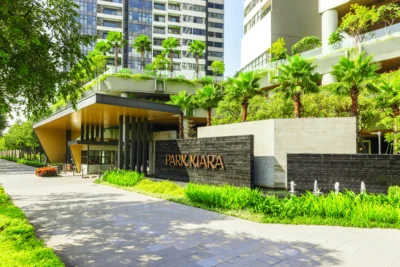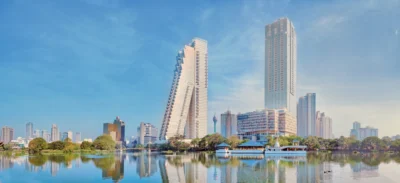Balancing aspiration and accessibility in India’s evolving housing market
Developers must align luxury ambitions with the urgent need for affordable homes to build equitable cities
India’s residential property market is undergoing one of its most dramatic transformations in decades, with a clear tilt towards luxury housing even as affordable options shrink. Analysts, developers, and architects agree that the country’s fast-growing cities are seeing robust sales momentum in high-end projects, while the challenge of ensuring inclusive housing remains pressing.
Surge in luxury demand
According to The Indian Express, the share of affordable housing in the overall market has dropped sharply in recent years. Homes priced below INR40 lakh accounted for nearly half of sales in 2018 but had fallen to less than one-third by 2023. In contrast, mid-segment and luxury units have surged, supported by rising household incomes, aspirational lifestyles, and a renewed preference for spacious living environments in the aftermath of the pandemic.
The Times of India reported in March 2024 that sales volumes across top urban markets were buoyant, led by Gurugram, where developers such as DLF launched large premium projects. The Mumbai Metropolitan Region (MMR), however, lagged in recovery, underscoring the uneven nature of growth across India’s regions.
Data from Global Property Guide shows that average house prices across major cities grew by more than 10 percent in 2023, with Delhi NCR and Bengaluru leading the upward trend. This performance makes India one of Asia’s fastest-growing residential markets, outpacing inflation and reflecting pent-up demand from both domestic and non-resident Indian buyers.
Market consultancy JLL echoed this view in its India Residential Market Dynamics report, highlighting that new launches and absorption rates remain particularly strong in the premium category, even as the supply of affordable homes shrinks. The report notes that developers are increasingly shifting capital and land banks toward higher-margin luxury projects, reshaping the industry’s long-term trajectory.
Dual-segment strategies
Yet the story is not one of luxury alone. As Madhav Raman, Co-Founder of Anagram Architects and a Member of the Judging Panel of the PropertyGuru Asia Property Awards (India), observed:
“India’s housing market is evolving rapidly, marked by a sharp rise in demand for premium and luxury homes. Developers such as DLF in Gurugram and Lodha Group in Mumbai have seen record-breaking sales, driven by growing affluence, aspirational lifestyles, and a renewed focus on high-end living post-pandemic. However, this surge in luxury development coexists with a persistent shortfall in affordable housing, particularly in fast-growing urban and peri-urban areas. The challenge for developers now is to strike a sustainable balance between serving the premium segment and addressing the country’s long-standing need for inclusive, accessible housing.”
Raman pointed out that several leading players are adopting dual-segment strategies. Godrej Properties is expanding its luxury portfolio in Mumbai and Delhi NCR while continuing to deliver affordable homes under the “Godrej Nest” brand in Greater Noida and Pune. Similarly, Tata Value Homes is targeting mid-income and affordable buyers in Ahmedabad, Bengaluru, and Chennai, often in alignment with government-backed schemes.
Schemes such as the Pradhan Mantri Awas Yojana (PMAY) and the Credit Linked Subsidy Scheme (CLSS) remain important in bridging viability gaps. For instance, Shapoorji Pallonji’s affordable housing developments in Kolkata and Ahmedabad have benefited from subsidised land access and quicker approvals under these programmes.
Innovation and liveability
Beyond financial incentives, Raman added that developers are turning to construction innovation to reduce costs and speed up delivery. Business Outreach also noted that Brigade Group in Bengaluru and Mahindra Lifespaces in Chennai are deploying modular and prefabricated techniques in township-scale projects, enabling more predictable timelines and lower build costs.
Yet affordability is not just about price. “True affordability must include livability,” Raman emphasised, pointing to the importance of transit-oriented projects. Developments near metro corridors in Pune, Hyderabad, and Bengaluru are increasingly attractive for offering proximity to jobs, education, and healthcare, making them more sustainable for long-term urban growth.
JLL reiterated that this integration of infrastructure and housing will define the next wave of urbanisation, where both aspiration and accessibility need to be built into the DNA of India’s future cities.
Awards spotlight: Recognising India’s leadership
The country’s performance in both premium and innovative housing has not gone unnoticed internationally. At the 19th PropertyGuru Asia Property Awards Grand Final, Indian developer Suryam Developers LLP secured the Best Waterfront Housing / Landed Development (Asia) title for By the Waters. Competing against winners from 15 property markets across Asia, Australia, and the Middle East, the project stood out for its design, sustainability, and contribution to lifestyle living.
Earlier in 2024, at the PropertyGuru Asia Property Awards (India), Signature Global (India) Limited was named Best Developer, while its project Signature Global Titanium SPR was recognised as Best Green Development. Suryam Developers LLP’s By the Waters triumphed at the national level, winning Best Waterview Housing Development.
These accolades underline the duality of India’s market: on the one hand, delivering premium projects that meet global benchmarks; on the other, showcasing innovation in sustainability and green design. The Awards reflect the country’s ability to compete not only within Asia but also on a global stage, setting standards that blend aspiration with responsibility.
Outlook
Based on JLL’s market insights and reporting by The Indian Express, India’s residential real estate will likely continue its upward momentum through 2025, supported by macroeconomic stability, rising incomes, and strong demand from the upper-middle class. Yet without sustained attention to affordable housing, policymakers and developers risk deepening inequality in urban living.
For Raman, the balance between aspiration and accessibility is the key to a sustainable housing future:
“India’s urban future depends on developers who can deliver both aspiration and accessibility, building cities that are not just profitable, but equitable.”
The message is clear. As developers chase record sales in the premium segment, their long-term credibility will hinge on their ability to also serve the millions of families seeking affordable, well-connected, and dignified housing.
The evolution of India’s housing sector is not just a story of luxury towers and aspirational lifestyles, it is also about whether the nation can translate its economic momentum into inclusive urban growth. Recognitions at the PropertyGuru Asia Property Awards show that Indian developers are capable of leading both ends of the spectrum. The challenge now lies in ensuring that success in the luxury market does not come at the expense of affordability, but rather inspires a more balanced and equitable housing landscape for the future.
Winners of the 6th annual PropertyGuru Asia Property Awards (India) will be unveiled on 12 December 2025. To know more, visit AsiaPropertyAwards.com/Award/India/.
Gynen Kyra Toriano, Digital Content Manager at PropertyGuru, wrote this article. For more information, email: [email protected].
Recommended
Asian infrastructure investments boost real estate and economic growth
Governments around Asia are spending billions to fuel infrastructure development to boost real estate and economic growth
Arquitectonica’s global impact reshapes skylines from Miami to Asia
Bernardo Fort-Brescia and his design practice Arquitectonica are making a seismic impact in Asia from an HQ in Florida
Park Kiara in Hanoi raises the bar for sustainable urban living
Park Kiara in Hanoi is a repudiation of low-density, car-dependent suburban sprawl
6 reasons Bekasi is rising as Greater Jakarta’s next hotspot
One of Greater Jakarta’s rising stars is prospering, thanks to ample recreation and a contingent of desirable housing projects









